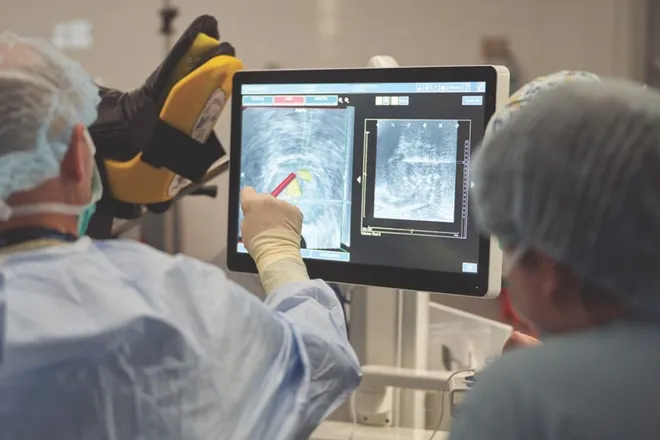
High-Intensity Focused Ultrasound (HIFU) is an advanced medical technology in which focused sound waves treat numerous health conditions. For many men, prostate cancer is a crucial concern. HIFU is one of the most promising solutions for prostate issues, offering effective treatment with fewer side effects. Here, we will provide you with everything you need to know about High Intensity Focused Ultrasound, its benefits, and its applications.
HIFU (High Intensity Focused Ultrasound) is a high-performing, non-invasive treatment that uses focused ultrasound waves to generate heat and destroy targeted tissues. As compared to traditional open surgery, no incisions are made; instead, ultrasound energy is directed with precision to the diseased area, such as prostate tumors, without damaging the surrounding healthy tissues.
To treat localized prostate cancer and benign prostatic hyperplasia (BPH), HIFU is primarily used. Patients who want effective treatment without a prolonged recovery should opt for High Intensity Focused Ultrasound (HIFU).
Here are some of the key benefits of HIFU in urological treatments, including:
Here is the difference between HIFU and other prostate treatments:
| Feature | HIFU (High Intensity Focused Ultrasound) | Radical Prostatectomy | Radiation Therapy |
| Invasiveness | Minimally invasive, no incisions | Major surgery | Non-surgical, but long sessions |
| Anesthesia Required | Yes (general or spinal) | Yes | No |
| Hospital Stay | Usually same-day or 1 night | 2–3 days | Outpatient, over multiple weeks |
| Recovery Time | A few days to 1 week | 4–6 weeks | Several weeks |
| Effectiveness | High for localized cancer | Very high | High |
| Risk of Erectile Dysfunction | Lower than surgery and radiation | Higher | Moderate |
| Urinary Incontinence Risk | Low to moderate | Higher risk | Moderate |
| Follow-Up Needs | PSA testing, occasional imaging | PSA monitoring and recovery follow-up | Ongoing monitoring and potential side effects |
| Repeatability | Yes | No (once the prostate is removed) | Limited |
Understanding the procedure can ease any concern about the HIFU experience. Here is the step-by-step procedure:
Pre-treatment Preparation: Before surgery, the patient will undergo several tests, such as blood tests, imaging studies, and sometimes a biopsy.
During the Procedure: The procedure is performed under general anesthesia; focused waves are delivered to the targeted area by inserting the HIFU device into the rectum. Around 2 to 3 hours is taken in the complete procedure.
Post-procedure Recovery: Patients are monitored closely and usually return home the same day or the next day and can return to their normal activities within a few days with minimal discomfort.
Expert urologists, such as Dr. Abouelleil, provide patients with quality pre- and postoperative medical care for faster recovery and optimal results.
Some of the potential risks of complications that may occur after HIFU include:
With expert urologists, such as Dr. Mourad Abouelleil, whose precise approach minimizes the risk of complications, follow-up care supports and monitors patient recovery.
Dr. Mourad Abouelleil is a world-renowned urologist who is dedicated to providing personalized treatment plans and quality medical care to every patient. Here are the major reasons to choose Dr. Abouelleil for HIFU Treatment:
Answer. HIFU procedure usually takes 1 to 4 hours, depending on factors such as the size and location of the targeted area.
Answer. After HIFU treatment, most of the patients return to their normal daily life activities within a few days, and for complete recovery, it typically takes a few weeks.
Answer. As compared to radiation therapy, HIFU does not use ionizing radiation, leading to fewer long-term side effects and quicker recovery for many patients.
Answer. Patients typically resume light activities within 2 to 3 days, while heavy lifting or strenuous activities should be avoided for at least 2 to 4 weeks.
Error: Contact form not found.